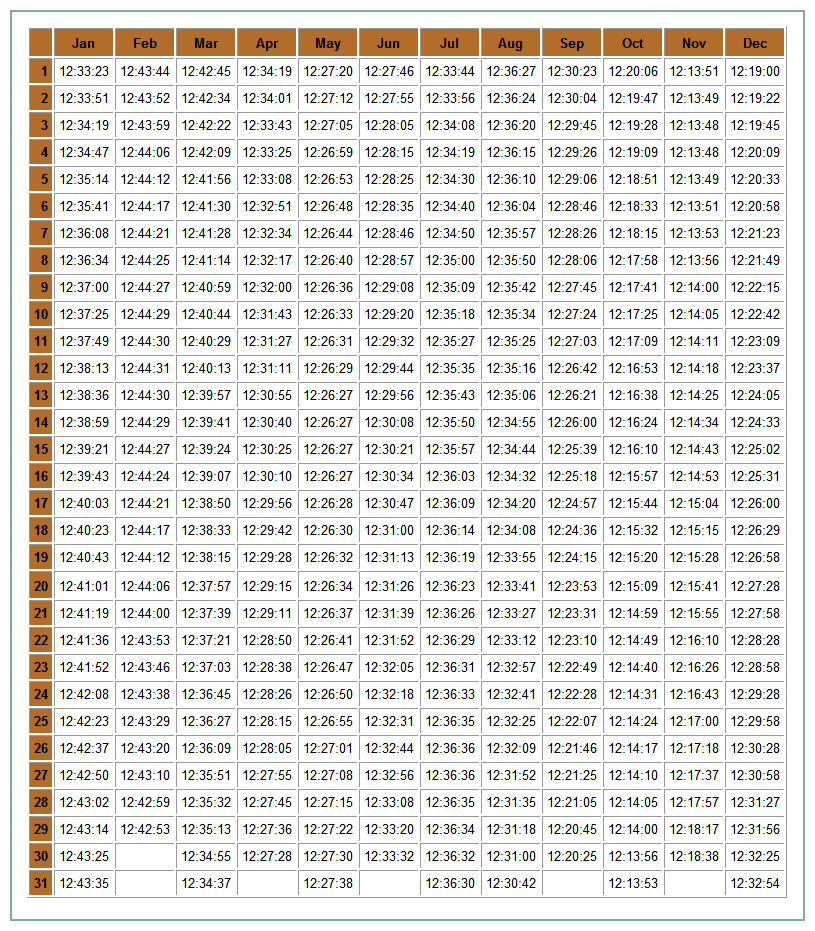zenith

That point in the visible celestial hemisphere which is vertical to the spectator; the point of the heavens directly overhead. — Webster, 1882
 In The Long Winter, Chapter 27, “For Daily Bread,” Laura Ingalls Wilder wrote that “the sun was in the zenith now. The day was half gone.” Although it sounds like Wilder is saying that the sun was directly overhead, she was implying that the sun was at its highest point for that particular day.
In The Long Winter, Chapter 27, “For Daily Bread,” Laura Ingalls Wilder wrote that “the sun was in the zenith now. The day was half gone.” Although it sounds like Wilder is saying that the sun was directly overhead, she was implying that the sun was at its highest point for that particular day.
The zenith angle is the angle between the overhead point for an observer and an object such as the Sun. The solar zenith angle is zero if the Sun is directly overhead and is 90 degrees when the Sun is on the horizon.
In the wintertime, the days are short and the Sun is low in the sky. During the short winter days the Sun does not rise exactly in the east, but instead rises just south of east and it sets south of west. The sun is never directly overhead in Kingsbury County during the winter.
Each day after the winter solstice, which occurs on December 21st, the Sun’s path becomes a little higher in the southern sky. The Sun also begins to rise closer to the east and set closer to the west until we reach the day when it rises exactly east and sets exactly west. This day is called the equinox. In the spring we have the Spring Equinox about March 21st. There is also a Fall Equinox on September 21st.
The Fall Equinox begins fall in the Northern Hemisphere and spring in the Southern Hemisphere. There are twelve hours of daylight and twelve hours of darkness at all points on the earth’s surface on the two equinoxes. Sunrise is at 6 a.m. and sunset is at 6 p.m. local (solar) time for most points on the earth’s surface.
Solar Noon.
In The Long Winter, Almanzo Wilder was noting solar noon, or that moment of the day that divides the daylight hours for that day exactly in half. It is the time, at a specific location, when the sun reaches its highest, apparent point in the sky, equal to true, or due, geographic south. To determine solar noon, calculate the length of the day from the time of sunset and sunrise and divide by two. Solar noon may be quite a bit different from ‘o’clock’ noon, and in Kingsbury County, it may be up to 45 minutes after 12 p.m. It is when the sun appears at its highest in the sky, or nearest the zenith.
While Wilder never gives an exact date for when Almanzo and Cap Garland leave town to find the wheat, in The Long Winter (see Chapter 31, “Waiting for the Train), she places the trip during the last week of February 1881. A solar noon calendar for De Smet is below:


zenith (THGY 27)

